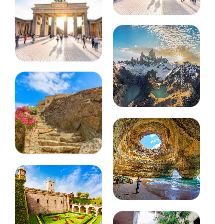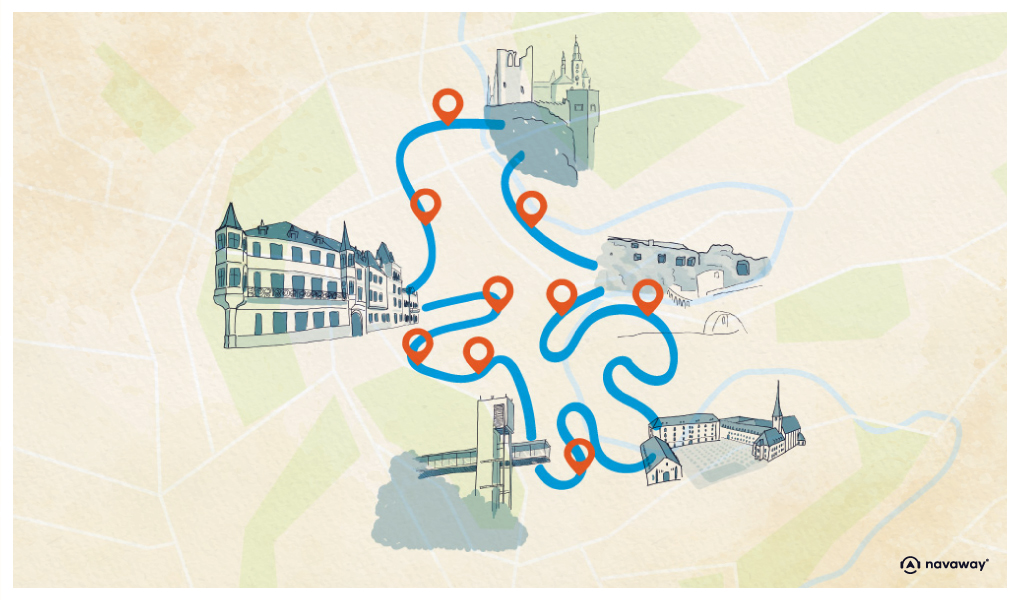
10 must-see museums in Luxembourg
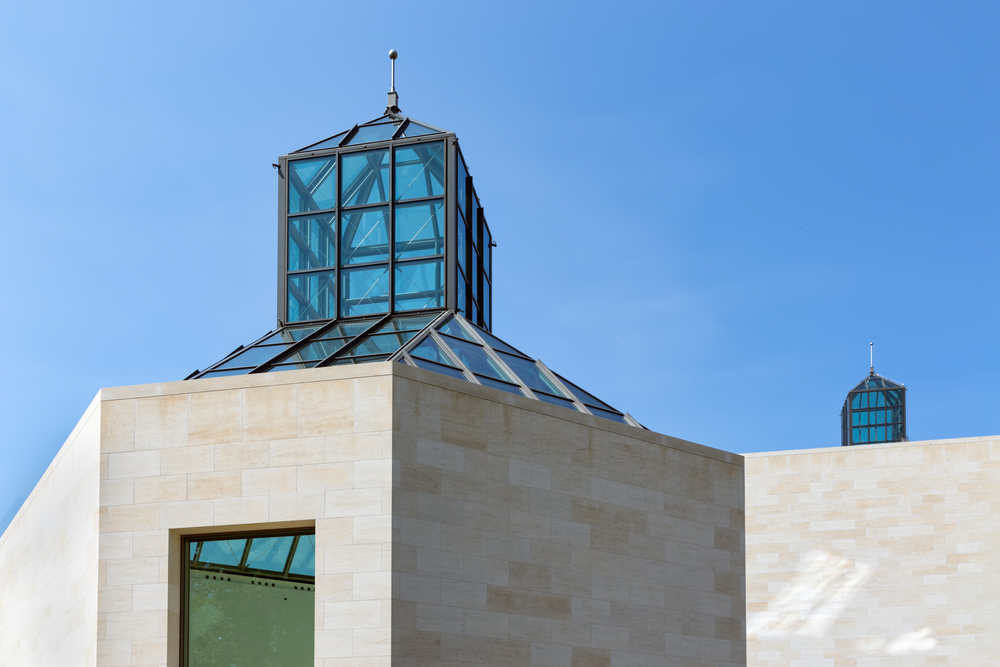
Although small in size, Luxembourg is home to an impressive wealth of culture. The capital of the Grand Duchy is packed with fascinating museums that trace the history, art and traditions of this country at the crossroads of Europe. Whether you’re a fan of modern art, military history or the natural sciences, here are the 10 must-visit museums in Luxembourg to enrich your stay.

Also read the Luxembourg guide :
- Top 6 things to do in Luxembourg
- Top 10 culinary specialities in Luxembourg
- What are the best hotels in Luxembourg?
1. Mudam Luxembourg – Musée d’Art Moderne Grand-Duc Jean
You can’t visit Luxembourg without visiting Mudam, an architectural gem designed by Ieoh Ming Pei, the famous architect of the Louvre pyramid. Located in the Dräi Eechelen park on the Kirchberg plateau, this Luxembourg museum of modern art is one of the most prestigious in the country.
The building itself, erected on the foundations of the former 18th-century Fort Thüngen, is a contemporary work of art. Its clean lines and façade of glass and stone create a fascinating dialogue between historical heritage and modernity. The exhibition space covers 6,000 m² on three levels, offering an immersive experience in international contemporary art (3 Park Drai Eechelen, L-1499 Luxembourg, rated 4.0/5 on Google with over 3,000 reviews).
The Mudam’s permanent collections feature hundreds of works by Luxembourg and international artists, which are regularly renewed to keep the place dynamic. The museum also hosts large-scale temporary exhibitions that attract art lovers from all over the world. Don’t miss the museum’s design restaurant, perfect for a gourmet cultural break. Tip: free admission every Wednesday evening!
2. The National Museum of History and Art (MNHA)
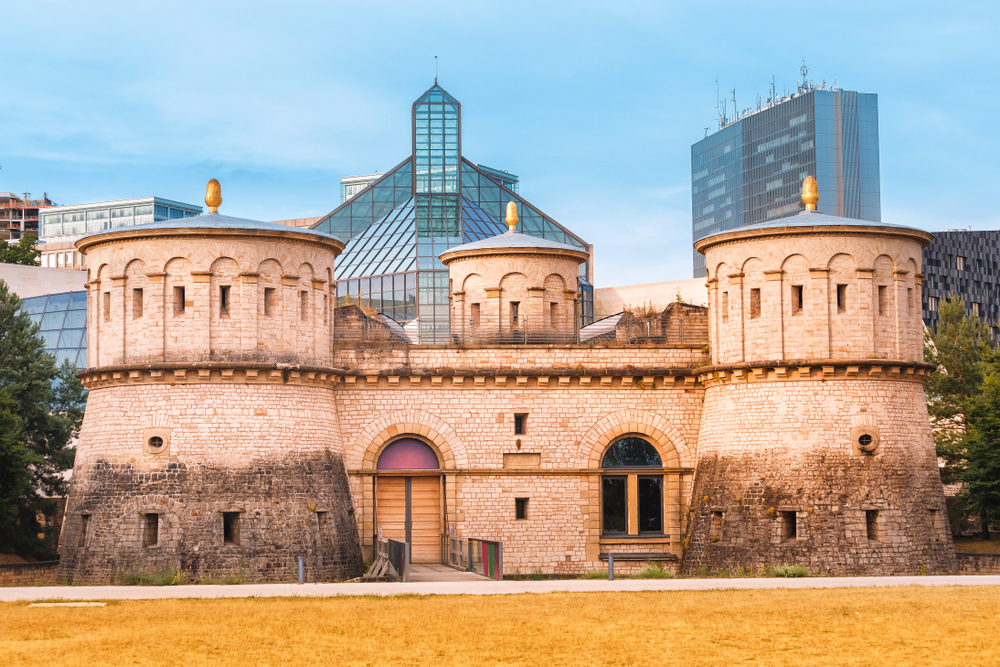
In the heart of Luxembourg’s old town, the Musée National d’Histoire et d’Art is a must-see for all history and culture buffs. This must-see Luxembourg museum occupies several historic buildings around the Marché-aux-Poissons and is one of the Grand Duchy’s most important cultural institutions.
The museum trail takes you on a fascinating journey through time. The three underground levels, covering around 700 m², are dedicated to the prehistoric period and Luxembourg’s Gallo-Roman heritage. You’ll discover exceptional archaeological remains that bear witness to human occupation of the region over thousands of years (Marché-aux-Poissons, L-2345 Luxembourg, rated 4.3/5 on Google out of 459 reviews).
The upper floors feature rich medieval collections including coins, weapons and works of sacred art. The fine arts department exhibits paintings and sculptures from the 15th to the 20th centuries. A new modern building completes the ensemble, with a cafeteria, an auditorium and areas for temporary exhibitions. Access to the permanent collections is entirely free, and educational events are regularly organised for children.
3. The Dräi Eechelen Museum
Located in the restored Fort Thüngen, built in 1732-1733, the Dräi Eechelen Museum (which means “Three Acorns” in Luxembourgish) is a unique museum dedicated to the history of the Luxembourg fortress and national identity. This Luxembourg City museum offers an immersive experience of the country’s military and social history.
The exhibition is structured around three main themes: the fortress of Luxembourg and its strategic role in Europe, the history of the country from the Burgundian conquest in 1443 to the erection of the Adolphe Bridge in 1903, and finally the construction of the Luxembourg identity. The fort’s exceptionally well-preserved casemates are one of the highlights of the visit (5 Park Dräi Eechelen, L-1499 Luxembourg, rated 4.2/5 on Google).
The museum offers a modern scenography with interactive displays, models and audiovisual projections that make the visit accessible to all. Admission to the permanent collections is free, making it an excellent option for discovering Luxembourg’s history without breaking the bank. To make the most of your exploration of the capital, let yourself be guided on your visit to Luxembourg by the Navaway audio tour.
4. The Villa Vauban – Musée d’Art de la Ville de Luxembourg
Nestling in the heart of Luxembourg’s magnificent municipal park, the Villa Vauban is an elegant 19th-century bourgeois residence transformed into an art museum. The building takes its name from the Fort Vauban that once occupied the site, part of whose walls can still be seen in the museum’s basement.
This Luxembourg art museum is particularly renowned for its collection of Dutch paintings from the Golden Age (17th century), with works by masters such as Rembrandt and Van Goyen. The exhibition also features French paintings from the 19th century and European paintings spanning several centuries. More than a hundred paintings and 14 sculptures make up the permanent exhibition, offering a captivating artistic journey (18 Avenue Emile Reuter, L-2420 Luxembourg, rated 4.1/5 on Google).
The museum’s modern extension hosts high-quality temporary exhibitions, often in partnership with prestigious international collections. Themed guided tours and creative workshops for children are regularly organised. Admission is free every Friday evening from 6pm to 9pm, a great opportunity to discover art in a friendly atmosphere.
Download the audio-guided tour to discover Luxembourg on foot and on your own
For a complete and enriching discovery of Luxembourg’s capital, the Navaway app offers you an audioguided itinerary of Luxembourg that takes you through the city’s most beautiful districts. Discover 18 places of interest on your own, with captivating historical commentaries and fascinating anecdotes about each site. The application includes interactive navigation that adapts to your position, allowing you to start the tour from any point on the route.
5. The National Museum of Natural History
Housed in the former Hospice Saint-Jean, a historic building dating back to 1308 that has been completely restored, the Musée National d’Histoire Naturelle offers a fascinating journey through 14 billion years of evolution. This free Luxembourg museum (for the permanent collections) is a must-see destination for families and those curious about the natural sciences.
The museum tour covers ten themed rooms exploring the history of our planet, the evolution of plant and animal species, and the unique features of the Earth and the universe. Exceptional fossils, rare minerals and carefully selected natural specimens illustrate the major stages of evolution (25 Rue Münster, L-2160 Luxembourg, rated 4.0/5 on Google).
The museum pays particular attention to Luxembourg’s natural heritage, with displays dedicated to local flora and fauna. Researchers and scientific facilitators regularly offer educational workshops on contemporary environmental issues, creating a link between natural history and current ecological challenges. The interactive exhibitions and fun activities make this a particularly popular visit for young visitors.
6. Casino Luxembourg – Forum d’Art Contemporain
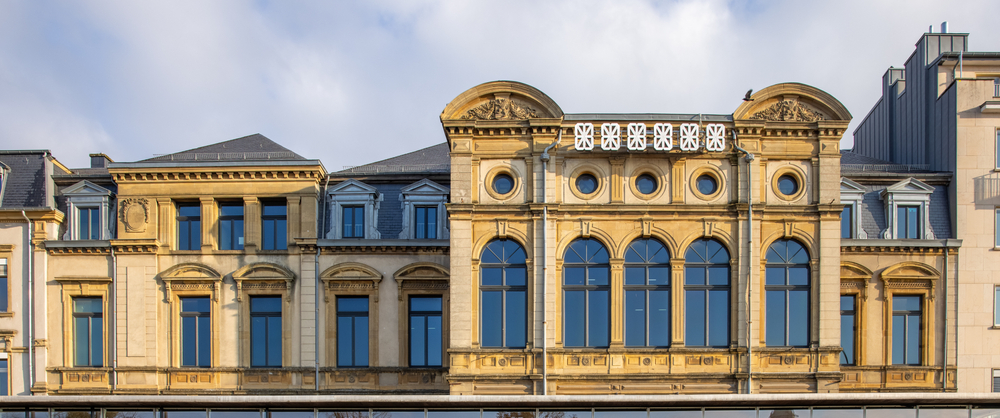
Don’t let its name fool you: Casino Luxembourg is nothing like a gambling establishment! Located right in the heart of the capital, this contemporary art forum occupies an elegant historic building that was actually a casino in the 19th century. Today, it has become a dynamic artistic laboratory dedicated to experimentation and emerging trends in contemporary art.
Casino Luxembourg differs from traditional museums in its innovative approach to art. Rather than a permanent collection, the institution presents an international programme of temporary exhibitions highlighting talented young artists and Luxembourg creators. Admission to all areas is free, reflecting the institution’s commitment to cultural accessibility (41 Rue Notre-Dame, L-2013 Luxembourg).
The building itself is well worth a visit, with its remarkably well-preserved Belle Époque architecture. The exhibitions explore all media: installations, videos, performances, photographs and paintings. Guided tours, meetings with the artists and participatory workshops regularly enrich the cultural offering. It’s the ideal place to discover Luxembourg’s most daring contemporary art scene.
7. The Lëtzebuerg City Museum
The Lëtzebuerg City Museum traces over a thousand years of urban history in an exceptional architectural setting. Comprising four restored and interconnected historic houses, the museum offers a fascinating chronological tour of the development of Luxembourg City from its medieval origins to the present day.
The tour begins with the medieval foundations visible in the basement, the remains of the old houses that once occupied the site. The upper floors feature detailed models of the town at different periods, everyday objects, archive documents and interactive multimedia installations. Particular attention is paid to the role of the fortress in urban development (14 Rue du Saint-Esprit, L-1475 Luxembourg, rated 4.2/5 on Google).
The museum also offers a spectacular panoramic view of the city from its upper floors, providing a unique perspective on Luxembourg’s urban planning. Temporary themed exhibitions complement the permanent tour, focusing on specific aspects of local history. Audioguides are available in several languages to enhance your understanding of this fascinating UNESCO World Heritage city.
8. The Luxembourg City Tram and Bus Museum
Located at the very heart of the Luxembourg bus depot in the Hollerich district, this original museum traces the captivating history of public transport in Luxembourg since 1875. It’s a particularly popular visit for children and fans of industrial and urban history.
The museum displays an impressive collection of historic vehicles: a life-size replica of a horse-drawn tramway from 1875, two working electric locomotives, vintage tramway trailers, as well as old buses and maintenance vehicles. Archive photos, maps of the network, old transport tickets and period tools complete the exhibition (63 Rue de Bouillon, L-1248 Luxembourg).
Documentary films and explanatory panels detail the technological evolution of urban transport, from horse-drawn trams to modern buses. Young visitors often leave with pretty model buses as souvenirs. The museum is only open on Thursdays from 1.30pm to 5.30pm, and guided tours can be arranged by appointment for groups. Admission is free, making it an ideal family outing for a rainy afternoon.
9. The Banking Museum
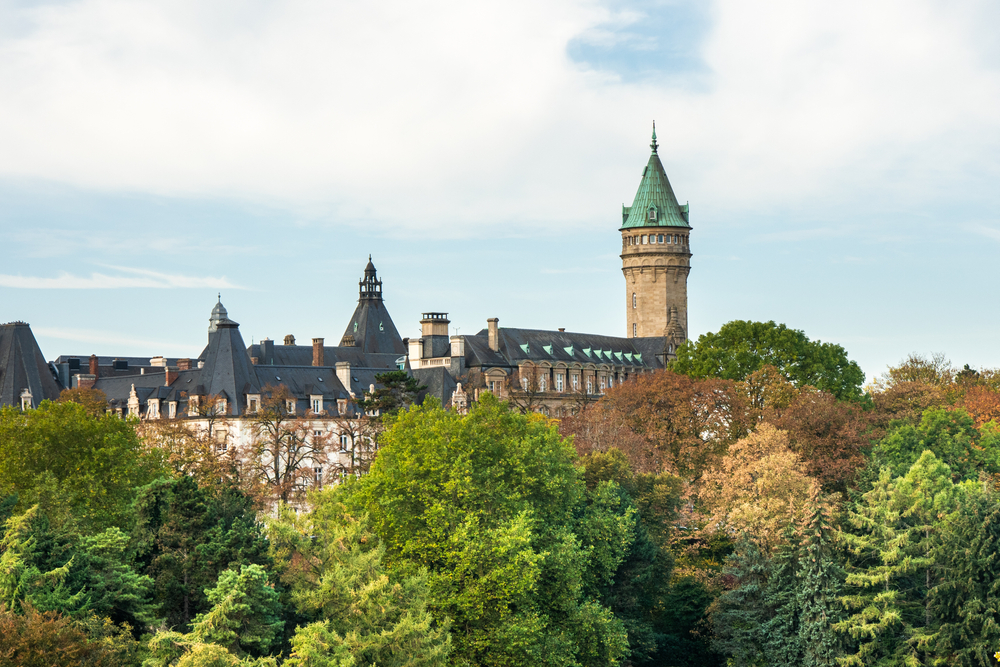
In a country recognised as one of Europe’s leading financial centres, the Musée de la Banque occupies a unique place in Luxembourg’s cultural landscape. Located in the heart of the financial district, this original museum traces the history of banking and finance in Luxembourg, from its modest origins in the 19th century to its current position as an international financial centre.
The exhibition showcases the evolution of banking practices, from ancient handwritten account books to modern computer systems. You will discover a fascinating collection of historic banknotes, rare coins, antique safes and period financial instruments. Interactive installations help you to understand the mechanisms of international finance and Luxembourg’s specific role in the European banking system (Headquarters of the Banque de Luxembourg, rated 4.1/5 on Google).
The museum also offers temporary exhibitions on contemporary economic themes and organises conferences with experts from the financial sector. It’s an instructive visit that provides a better understanding of why Luxembourg has become such an important financial centre. The clear, educational explanations make the subject accessible even to the uninitiated. As you explore the capital, don’t forget that the Navaway itinerary allows you to discover all the city’s emblematic districts on your own.
10. The Fortress Museum at the Three Acorns Museum
Although we have already mentioned the Dräi Eechelen Museum, it is worth highlighting the importance of the Casemates du Bock in Luxembourg’s museum offering. These underground galleries dug into the rock are Luxembourg’s most visited tourist attraction, welcoming over 100,000 visitors a year. They are the most impressive remains of the ancient fortress that earned the city the nickname “Gibraltar of the North”.
The casemates extend over 17 kilometres of underground galleries on several levels, part of which is open to the public. These fortified corridors, dug as early as 1644 by the Spanish and later extended by the Austrians and French, could house up to 1,200 soldiers, their horses and equipment. A visit to these historic tunnels offers a unique and immersive experience of European military history (10 Montée de Clausen, L-1343 Luxembourg).
The underground route reveals vaulted rooms, dizzying light shafts and loopholes offering spectacular views over the lower town. Explanatory panels detail the history of the fortress and its strategic importance over several centuries. The constant temperature of 8-10°C in the casemates means that warm clothing is essential, even in summer. This underground tour is the perfect complement to the other Luxembourg museums for understanding the exceptional historical role of this fortified city.
In conclusion, Luxembourg’s museums offer a remarkable diversity that will satisfy all types of visitor, from contemporary art enthusiasts to military history buffs, natural science buffs and families with children. Most of these institutions offer free or very affordable admission, reflecting the Grand Duchy’s desire to make culture accessible to all. To optimise your discovery of the capital and make sure you don’t miss any of the major cultural sites, don’t forget to download the Navaway app, which will guide you through the historic streets and emblematic districts of this fascinating city, a UNESCO World Heritage Site. Whether you have a day or a whole weekend, these must-see museums will greatly enrich your Luxembourg experience and give you a better understanding of the unique identity of this small country at the heart of Europe.
Frequently asked questions
Which museums in Luxembourg are free?
Several Luxembourg museums offer free admission to their permanent collections, including the Musée National d’Histoire et d’Art (MNHA), the Casino Luxembourg – Forum d’Art Contemporain, and the Musée Dräi Eechelen. The Mudam also offers free admission every Wednesday evening, while the Villa Vauban opens its doors free of charge every Friday evening from 6pm to 9pm. The Tram and Bus Museum is also open free of charge.
How long does it take to visit Luxembourg’s main museums?
The length of the visit varies from museum to museum. Allow around 2 hours for the Mudam or the Villa Vauban, between 3 and 4 hours for the National Museum of History and Art if you want to see everything in detail, and 1 to 2 hours for the more specialised museums such as the Dräi Eechelen Museum or the Natural History Museum. For an in-depth visit to all the museums mentioned, allow at least 2 to 3 days.
Are Luxembourg’s museums child-friendly?
Yes, several Luxembourg museums offer activities specially designed for young visitors. The Musée National d’Histoire Naturelle offers captivating educational workshops, while the Musée des Tramways et des Bus is a particular delight for children, with its historic vehicles and scale models on display as souvenirs. The MNHA also organises events for families. Most museums offer reduced or free admission for under-21s.
Can I visit several museums with a single pass?
The “Friends of the Museums” card gives access to a number of Luxembourg’s cultural institutions, including Mudam, Villa Vauban, MNHA, Musée Dräi Eechelen and Casino Luxembourg. This annual card offers unlimited entry and preferential rates for temporary exhibitions. In addition, the Luxembourg Card, available for 1, 2 or 3 days, gives free access to over 60 of the country’s tourist attractions, including most museums.
What are the opening times for museums in Luxembourg?
Opening times vary from one museum to another. Most museums are open from Tuesday to Sunday, generally from 10am to 6pm, with late-night opening on certain days (the Mudam on Wednesday, the Villa Vauban on Friday). The Tram and Bus Museum only opens on Thursday afternoons. It is advisable to check the specific opening times on the official websites of each museum before your visit, as they may vary according to the season and public holidays.
200 audioguided tours for cities all around the world
Download